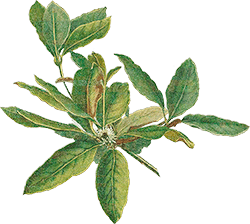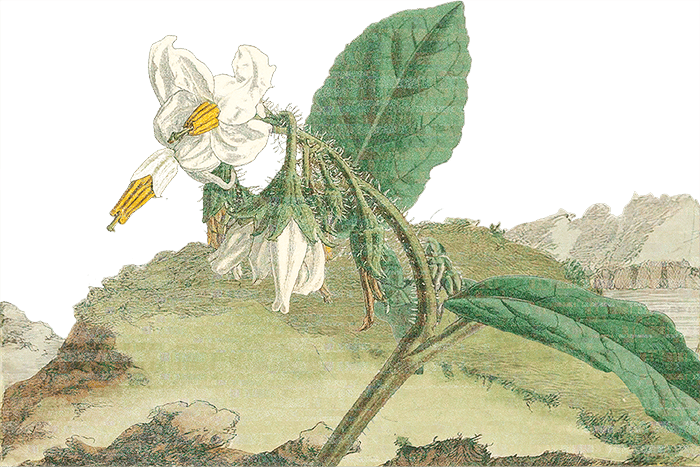On today’s show we learn about the Koyama’s Spruce, a critically endangered evergreen conifer native to eastern Asia, specifically central Japan and the Nagano and Yamanashi prefectures.
Rough Transcript
Intro 00:05
Welcome to Bad at Goodbyes.
On today’s show we consider the Koyama’s Spruce
Species Information 02:05
The Koyama’s Spruce is a critically endangered evergreen conifer native to eastern Asia, specifically central Japan and the Nagano and Yamanashi prefectures.
Description
The Koyama’s Spruce is a medium-sized evergreen tree typically reaching heights of 60 to 80 feet, although some specimens can grow as high as 100 feet tall. It has a conical, pyramidal growth form, a classic christmas tree shape. It has a straight trunk that can measure up to 2 to 3 feet in diameter at maturity.
The branches of the Koyama’s Spruce are relatively short and stiff, spreading horizontally and sometimes upward curving from the trunk. The dense needle-like leaves are about a half inch to three quarters inch long, dark green in color, and somewhat diamond shaped. The needles are arranged radially on the twigs, meaning that they point outwards in all directions, rather than being clustered on like the top or bottom side. This gives the branches a full and bushy appearance.
It has smooth, gray bark that may become scaly with age, as the hardened outer bark splits and fissures from the pressure of new inner bark growing beneath it.
Bark color in trees is the result of the combination of secondary metabolites, so these are organic compounds, like tannins, lignins, carotenoids and anthocyanins. These secondary metabolites contribute to a plant’s secondary metabolic processes, so not primary processes like growth, photosynthesis and reproduction.
For example tannin, which lends a red-ish brownish hue, is antimicrobial, meaning it protects the trunk against bacterial infection. And it tastes really bitter, serving as a disincentive for potential herbivore and insect feeders. Lignin, which is creamy yellow and white-ish, provides rigidity and strength, protecting the tree from physical damage. Carotenoids, which can produce yellow, orange, and red hues, have antioxidant qualities, helping the tree clear toxins. And anthocyanins, which can produce red, purple, and blue colors, provide photoprotection, a protection from excessive light and UV radiation.
So, all of that is to say, that bark color is the result of the balance of these secondary metabolites. Redwood bark, for example, has a high concentration of tannin. Birch has a high concentration of lignin. The Koyama’s Spruce’s gray results from the combined concentrations of its secondary metabolites.
I want to note that this is a simplification, there are a massive amount of organic compounds that may influence bark pigmentation, but hopefully I’m getting across the idea that underlying and informing the outward visual appearance are foundational biological systems. Or to say this another way: The gorgeous stark gray color of the Koyama’s Spruce’s bark is beautiful because it pleases my human eyes. And it is beautiful because it is a visual document of wildly complex life-making processes, the result of millennia of adaptation.
And also time and exposure. The coloration of tree bark is also influenced by weathering, exposure to blanching sunlight, wind, and rain can cause bark to fade or change color over a tree’s lifespan.
Reproduction
Koyama’s Spruce is a monoecious conifer, meaning separate, distinct male and female cones are present on the same plant. The Spruce blooms in May and June, with small, cylindrical reddish brown male pollen cones and larger green-ish brown female cones.
Koyama’s Spruce is wind-pollinated. The wind carries pollen from male cones to the female cones on another individual. We do not believe that Koyama’s Spruce can viably self-pollinate. But if wind carried pollen finds purchase on a compatible female cone of another individual, fertilization occurs. The ovules develop into seeds within the cones, and as they mature the cones become a rich reddish-purple and hang downward from the Spruce’s branches. The mature cones are roughly 3inches long and 1 inch wide. Each cone has many thin and woody seed scales, and smaller bract scales, which protect the seeds.
When the maturing cone is ripe, generally in the autumn, it opens, releasing its seeds. The seeds are black, with pale brown wings, adapted for anemochory, which means wind-dispersal. So the released seeds are carried by the wind, and if they land in a favorable microclimate, they will germinate.
The Koyama’s Spruce requires very restrictive conditions for successful germination and seedling growth. In its natural habitat scientists have observed that new seedlings exclusively establish only in mineral rich soil, on sloped, rocky surfaces, near their parent trees. It is usually found in small stands of 10-20 individuals, all likely sharing similar genetic lineage.
In The Dream
————
In the dream, I am a small child again, in my grandparents yard, under a brilliant blue sky, surrounded by family, the towering limbs and trunks of uncles and aunties, my parents nearby. We are celebrating, and though I do not what, the swaying adults and their laughter in the wind and their closeness is a comfort. I am the firstborn of my generation and grew into the sweet tangled love of my elders. That is true in my life and true in the dream.
————
Habitat
The Koyama’s Spruce is native to the mountainside slopes of central Japan, specifically the Akaishi and Yatsugatake Mountains, in the Nagano and Yamanashi prefectures.
These mountain ranges are part of the Japanese Alps, a bioregion of rugged, high-altitude terrain with jagged peaks and deep valleys and a mix of temperate and subalpine forests.
Within this bioregion, Koyama’s Spruce is highly localized, found only on north-facing mountain slopes, between thirty-five hundred and sixty-five hundred feet above sea level, in a roughly 60 sq mile area. This is steep, rocky terrain, with thin soils and outcrops of bedrock.
These mountains were formed over millions of years through a combination of geological processes. The peaks at the northern end of the Koyama’s Spruce range, like Mount Aka and Mount Nishi are the result of volcanic activity, lava cooling and building up over roughly 1.5 millions years. The peaks of the southern tip of its range, like Mt. Akaishi, are the result of tectonic uplift and erosion, formed as tectonic plates collided and pushed up the landmass. Over millions of years, weathering and erosion have shaped the peaks into their current form.
This region has cool summers, cold winters, and high annual rainfall. Summer temperatures reach highs in the low 70s, and winter lows can drop into the single digits. Annual rainfall ranges from 60 to 80 inches per year, with much of this falling as snow during the winter months. Winters bring strong winds, heavy snowfall, and occasional landslides. The region weathers relatively frequent typhoons.
The Koyama’s Spruce shares its mountains with Japanese Cicada, Japanese Stonecrop, Siberian Dwarf Pine, Japanese Pygmy Woodpecker, Snow Monkey, Japanese Squirrel, Erman’s Birch, Rockfoil, Japanese Oak Silkmoth, Alpine Avens, Sika Deer, Varied Tit, Japanese Grasshopper, Maries’ Fir, Giant Horntail, Siebold’s Primrose, Copper Pheasant and many many more
Threats
Historically, the most prominent threat to Koyama’s Spruce was extensive logging during the late 19th Century. Rapid human development and industrialization demanded timber, leading to widespread deforestation throughout the Spruce’s range. Affecting both the Koyama’s Spruce itself whose wood was prized, and also the habitat in general, challenging possible regeneration of the species.
Increased development also brought the construction of roads and infrastructure which further fragmented the habitat.
Though large-scale logging has ceased, its effects ripple into our present. Logging operations often replanted these forests with Japanese larch, a deciduous conifer, which now competes with the Koyama’s Spruce for habitat resources.
Human induced climate change is also a major concern. Rising temperatures and the increase of frequency and severity of extreme weather, specifically typhoons, threaten the remaining Koyama’s Spruce population.
Conservation
The Koyama’s Spruce is protected under Japanese law, prohibiting logging and trade, and most of its range falls within a National Park. Off-site conservation programs at botanic gardens and arboretums across the globe are in place, cultivating specimens to safeguard genetic diversity.
Nevertheless the Koyama’s Spruce has been considered critically endangered on the IUCN Red List since 2011 and their population is currently in decline.
Our most recent counts estimate that less than 1000 Koyama’s Spruce remain in the wild.
Citations 19:23
BMC Plant Biology vol. 22, issue 530 – https://doi.org/10.1186/s12870-022-03909-x
The Gymnosperm Database – https://www.conifers.org/pi/Picea_koyamae.php
International Dendrology Society, May 7, 2017 – https://www.researchgate.net/publication/318457183_Bark_its_anatomy_function_and_diversity
IUCN – https://www.iucnredlist.org/species/31290/9616484
Journal of Forest Research Volume 16 - Issue 4 – https://doi.org/10.1007/s10310-010-0227-4
Journal Of The Japanese Forestry Society - Volume 81, Issue 3 – https://doi.org/10.11519/jjfs1953.81.3_236
Scientific Reports vol. 11 issue 1 – https://doi.org/10.1038/s41598-021-97747-w
South African Journal of Botany, Volume 150 – https://doi.org/10.1016/j.sajb.2022.09.018
Wikipedia – https://en.wikipedia.org/wiki/Picea_koyamae
Music 21:18
Pledge 32:18
I honor the lifeforce of the Koyama’s Spruce. I will carry its human name in my record. I am grateful to have shared time on our planet with this being. I lament the ways in which I and my species have harmed and diminished this species.
And so, in the name of the Koyama’s Spruce I pledge to reduce my consumption. And my carbon footprint. And curb my wastefulness. I pledge to acknowledge and attempt to address the costs of my actions and inactions. And I pledge to resist the harm of plant or animal kin or their habitat, by individuals, corporations, and governments.
I pledge my song to the witness and memory of all life, to a broad celebration of biodiversity, and to the total liberation of all beings.

